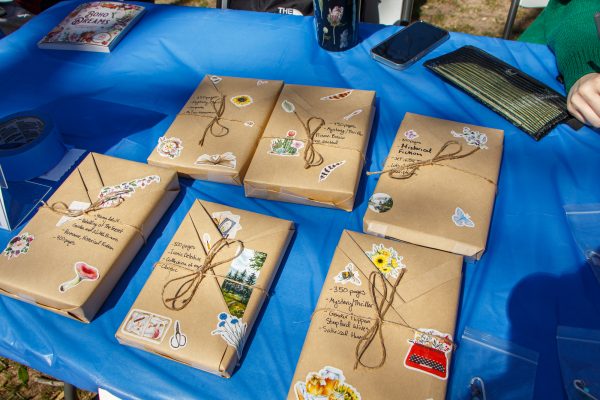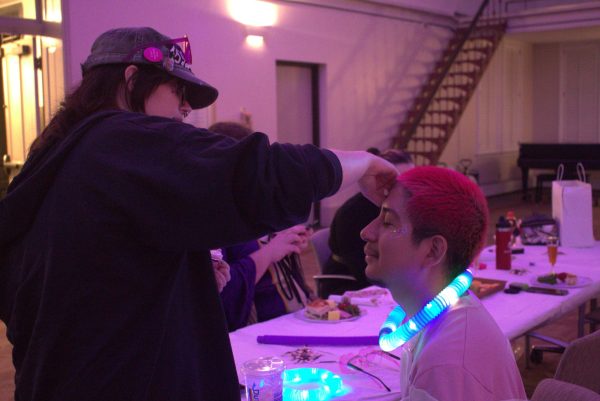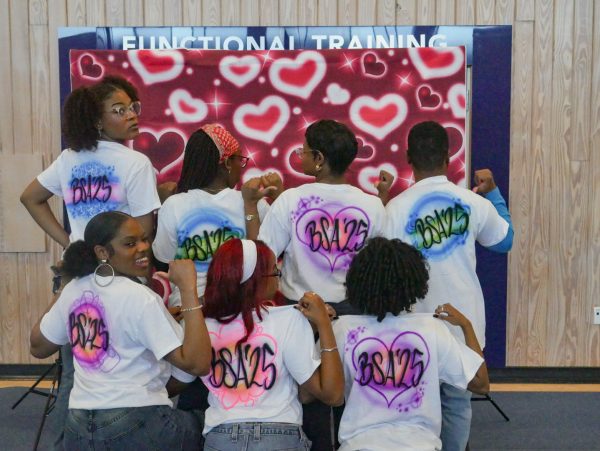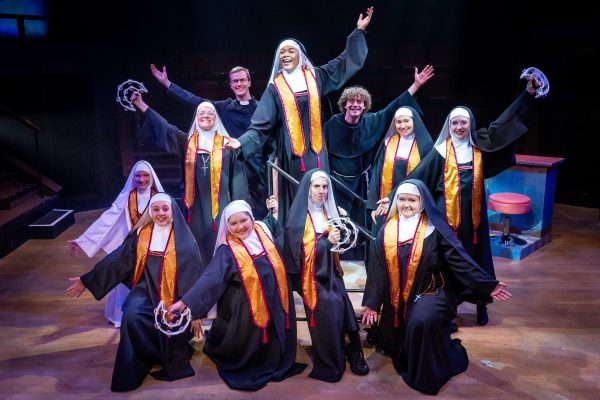Catholic artist inspired by family, religion and weather
In the wake of a storm that recently wrecked havoc on his home in New York, a visiting artist spoke about the evolution of his art.
Professor Pato Hebert presented a public lecture Wednesday, Nov. 7. His artwork will be on display in the Fine Arts Gallery until Nov. 30. Hebert is a visiting associate arts professor in the art and public policy department at Tisch School of Arts, New York University.
The title of his collection “And Also With You” was inspired by a now-defunct phrase Catholics would repeat back to a priest after being told, “And also with you.” The phrase and others are being transitioned out and replaced following a decision made on the translation in 2008 by the U.S. Conference of Catholic Bishops, according to NPR.
Hebert’s parents met through their Catholic youth group priest, after whom Hebert is named, Hebert said. Much of Hebert’s art relates to his family. A collection of Hebert’s pieces consists of photographs that were taken in various settings with a rocker that belonged to his grandmother.
More recent artistic endeavors by Hebert are made through a community effort. Hebert has worked with children of various ages through questionnaires and with digital cameras as well as many other ways.
Hebert also talked about Hurricane Sandy. He projected images of the aftermath of the storm and compared the images, which he admitted were devastating, to artists’ installations.
During the time that Hebert has been at St. Edward’s University, he has already had quite an impression.
“I’m struck by how open people are here,” Hebert said.
Hebert explained that his work’s connectedness has early inspirations. He said that due to being from a large family and having been the oldest grandchild on both sides of his family, as well as having been raised Catholic, he always felt like he was connected to something larger than himself.
Hebert shared one of the sayings he often keeps in mind.
“Poco a poco [Spanish for ‘bit by bit’],” Hebert said.
Hebert’s lecture concluded with attendees being given two flags: one orange-striped, one solid blue. On the orange-striped flag, Hebert instructed his audience to finish the thought “I lose it…” and on the blue flag he told the audience to finish the thought “I’m at peace…” Once the flags were written, they were then collected and returned to Hebert. The flags can now be found displayed outside of the Fine Arts Building on the lawn.






